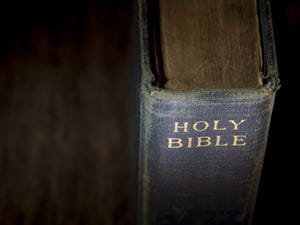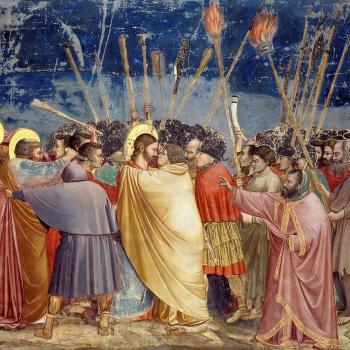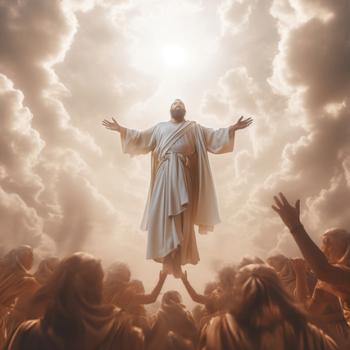
In 2013, the Disciples of the New Dawn started posting highly offensive memes on Facebook. They attacked everyone from Pagans and steampunk fans to women who had C-sections.
Tapping into fears about religious fundamentalism and public obsession with “cults,” their vitriolic posts went viral.
As the posts were shared with increasing frequency, some started to wonder whether Disciples of the New Dawn were a real religious community or just a cabal of internet trolls goading us into digital outrage (it turns out, they were the latter).
When I teach courses on religious studies, I like to use the case of the Disciples of the New Dawn as an opportunity for students to wrestle with the concept of religion itself. It prompts them to consider questions like: what makes a religion real? Or, what makes a religion ”religious” at all?
While we may feel like “we know religion when we see it,” we generally struggle to be exact when it comes to determining what counts as religion. Even if we have a vague idea, defining religion feels like pinning jello to a wall.
Which makes things difficult. Because, before can begin to dig deeper into the topic of religion, we first have to define the object of our study.
So, what is this thing we call “religion” anyway?
How We’ve Defined “Religion.”
Numerous scholars, saints, and specialists have tried to define religion. Although interpretations vary in style and substance, sociologist Peter Berger identified two general kinds: substantive and functionalist.
In short, substantive definitions try to define what religion is. Functionalist definitions try to describe what religion does.
Some examples of substantive definitions include the following:
- Religion is “belief in spiritual things.” — E.B. Tylor
- "Religion is that which grows out of, and gives expression to, experience of the numinous in its various aspects." — Rudolf Otto
- “Religion is the recognition that all things are manifestations of a Power which transcends our knowledge.” — Herbert Spencer
Here is a sampling of functionalist definitions:
- Religion is “eminently social” because “religious representations are collective representations which express collective realities.” — Émile Durkheim
- "Religion is the sigh of the oppressed creature... a protest against real suffering... it is the opium of the people... the illusory sun which revolves around man for as long as he does not evolve around himself." — Karl Marx
- “…something is doing religious work if it is engaged in negotiating what it is to be human.” — David Chidester
- “Religion is whatever gets you through the night.” — Frank Sinatra
Others have defined religion from the perspectives of anthropology, feminism, philosophy, and other disciplines. This has led to definitions of religion as:
- a “cultural system” (Clifford Geertz)
- a category of family resemblances (Ninian Smart)
- “categories of the masculine symbolic” (Grace Jantzen)
- confluences of flows “that intensify joy and confront suffering” (Thomas Tweed)
- “a cognitive act of a creative and just memory” (Pamela Sue Anderson)
- “a technology for interrogating human experiences and the boundaries between people and other things” (Anthony Pinn)
- a vital reality of human “yearning” (bell hooks)
- “an ever-adapting ecosystem of objects” (S. Brent Plate)
- “vestigial states” competing with nations for people’s allegiance (Naomi Goldenberg)
And that’s just to name a few!
In the end, no definition pleases everyone. No definition does all the work required of it. As American studies scholar Thomas Tweed put it, “no constitutive disciplinary term is elastic enough to perform all the work that scholars demand of it."
But that doesn’t mean we abandon the effort.
Instead, Tweed wrote, “we should continually refine and revise our understanding…for different purposes and contexts.” In other words, let the defining of religion abound!
Religion, religions, religious.
Surveying this abundance of definitions, scholar Jonathan Z. Smith quickly concluded that religion is not a universal or consistently applied term.
Because predominately white, European, Christianity-influenced dudes have often been the ones defining it, it’s important to note that many cultures don’t have an equivalent concept.
For example, among Hindu traditions there is no parallel for the word “religion.” Instead, practitioners prefer the concept of santana dharma (cosmic order or eternal obligation). Similarly, in Japan, there was no comparable word for “religion” or any concept that matched its Western meaning before colonial contact.
That’s why many now agree that religion isn’t even a thing on its own, but a concept of our own creating.
This conclusion doesn’t make the whole enterprise of studying religion worthless. Instead, Smith and others have encouraged students of religion to turn from studying religions per se to studying the way people talk about religion. Or, studying what counts as “religion” in the first place.
Studying religion as a human creation.
What makes religious studies essential is not that it studies the “sacred” or anything particularly set apart or special (that’s the job of disciplines like “theology”).
Alternatively, the study of religion guides us to pay attention to the ways humans employ the concept of the “holy” to make sense of the world around them and their place in it.
The why of studying religion doesn’t change. Religion remains interesting, intricate, and important. We just need to shift what we are studying and how we go about making sense of it.
As we embark on this “What you missed without religion class” journey, we will talk about a lot of things we consider “religious,” but with a twist. Instead of treating these things as taboo, sacred, or sacrosanct, we will study religious rituals, beliefs, and objects as thoroughly human creations.
That means instead of trying to get at the hidden, inner, or mystical life of religious actors, our task is to study the external and observable. Although this approach doesn’t rule out the possibility of the numinous, it decidedly does not try to prove, endorse, or criticize it. Heck, it doesn’t even try to understand or define it.
So, we suspend [or bracket] our judgment and proceed to study beliefs, practices, or objects as if they are simply a product of our own making. The same applies to our definition of “religion” itself.
In my next post, we will begin to do just this, as we explore the practice of ritual fasting in multiple traditions.
Further reading:
- "The Invention of World Religions" by Tomoko Masuzawa
- "Before Religion" by Brent Nongbri
- "The Invention of Religion in Japan" by Jason Ananda Josephson Storm
- "Consuming Religion" by Kathryn Lofton
- "Interplay of Things" by Anthony B. Pinn
- “Religion as Vestigial States,” by Naomi Goldenberg
- "What is Religion? Debating the Academic Study of Religion", ed. by Aaron Hughes and Russel T. McCutcheon
- “Religion, religions, religious,” by Jonathan Z. Smith
Want your question(s) about religion answered? Connect with Ken on Twitter: @kchitwood.
2/24/2022 8:43:48 PM





